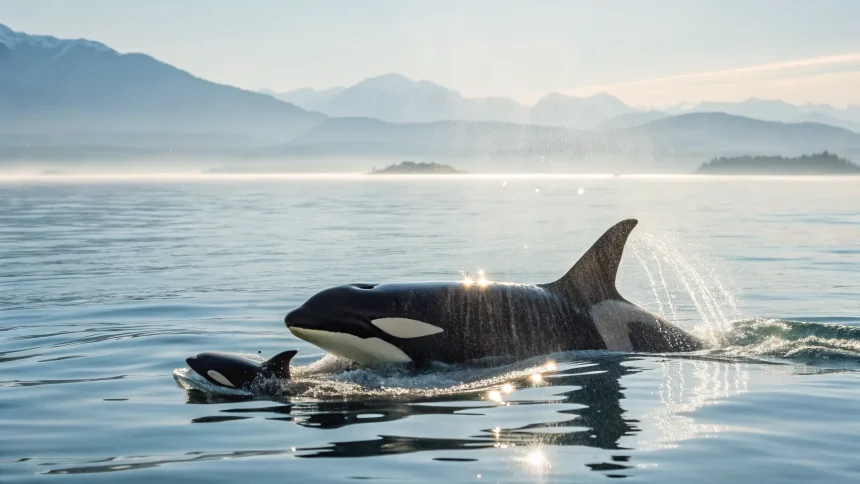An endangered orca in Washington state has been observed carrying her deceased newborn calf in what marine biologists believe may be an attempt to revive it. This rare and poignant behavior has drawn attention from wildlife researchers and conservation groups monitoring the vulnerable orca population in the Pacific Northwest.
Maternal Grief in Marine Mammals
The female orca was spotted swimming while supporting the lifeless body of her calf on her head, occasionally diving and then resurfacing with the newborn still balanced on her rostrum. This behavior is consistent with what scientists describe as grief-like responses observed in certain cetacean species.
“This type of behavior shows the strong maternal bonds that exist in orca pods,” said a marine biologist familiar with the Southern Resident orca population. “The mother appears reluctant to separate from her calf despite its death, which demonstrates the complex social and emotional lives these animals lead.”
Researchers tracking the incident noted that similar behaviors have been documented in other dolphin and whale species, though extended carrying of deceased offspring is relatively uncommon in the wild.
Conservation Implications
The incident highlights the ongoing challenges faced by the endangered Southern Resident orca population in the Pacific Northwest. This distinct group of orcas has experienced significant population decline over recent decades, with current numbers hovering around 75 individuals.
The loss of a newborn calf represents a serious blow to conservation efforts, as successful reproduction is critical for the population’s recovery. Several factors have contributed to the orcas’ endangered status:
- Declining salmon populations, particularly Chinook salmon, their primary food source
- Environmental contaminants in Puget Sound and surrounding waters
- Underwater noise pollution from vessel traffic
- Habitat degradation in coastal waters
The Washington Department of Fish and Wildlife has implemented protective measures for these orcas, including fishing restrictions and vessel distance regulations. However, calf mortality remains a significant concern, with several failed pregnancies and newborn deaths recorded in recent years.
Scientific Monitoring Efforts
Wildlife officials and research teams are closely monitoring the mother orca and her pod following this incident. They’re collecting data on the group’s movements, behavior patterns, and physical condition to better understand the impact of the calf’s death on both the mother and the broader social structure.
“Each calf loss is devastating for this population. With such small numbers, every individual matters for genetic diversity and the long-term survival of these unique orcas,” explained a conservation specialist working with the monitoring program.
Researchers are using drones and boat-based observations to document the mother’s behavior while maintaining appropriate distances to minimize disturbance. The information gathered will contribute to ongoing studies of orca reproduction and calf survival rates.
The incident has also prompted renewed calls from environmental organizations for stronger protection measures for the Southern Resident orcas and their habitat, including expanded salmon restoration efforts and stricter controls on water pollution.
As scientists continue to observe this behavior, they hope to gain valuable insights into orca social structures and maternal bonds that could inform future conservation strategies for this critically endangered population. The mother orca’s apparent mourning behavior serves as a powerful reminder of the complex social lives of these marine mammals and the urgent need for effective conservation measures to ensure their survival.









